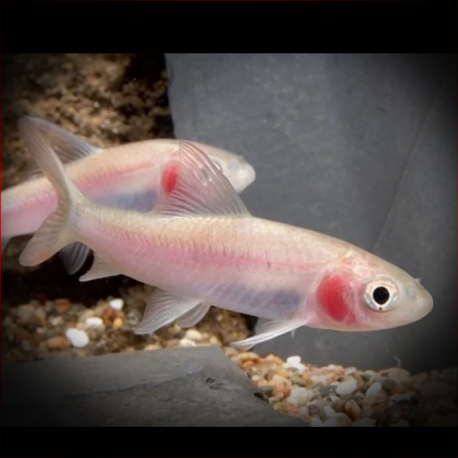More info
Datasheet
| Minimum Tank Size | 860 litres / 227.19 US gallons |
| Maximum Size | 25.0cm / 9.84inches |
| Temperature | 18°C / 64.40°F - 24°C / 75.20°F |
| Hardness | 2.02dgH / 36ppm - 15.02dgH / 268ppm |
| pH | 6.0-8.0 |
General Description
The Violet Shark, scientifically known as Labeo Boga, is a species classified under the order Cypriniformes and the family Cyprinidae. It can grow up to a maximum size of 25.0cm and requires a minimum tank size of 860 litres. This species is primarily a benthic feeder and accepts various sinking foods, including live or frozen chironomid larvae, Tubifex, and dried products.
Aquarium Setup
The Violet Shark thrives in aquarium setups that prioritize water quality and ample open swimming-space over decor. However, for long-term care, it is recommended to provide a setup resembling a flowing river with a substrate of rocks, gravel, water-worn boulders, and driftwood branches. The water conditions for this species should ideally maintain a hardness of 36-268ppm, a pH range of 6.0-8.0, and a temperature between 18-24°C (see table).
Behaviour
Known to exhibit aggressiveness towards conspecifics and similarly-shaped fishes, the Violet Shark can be especially hostile in smaller aquarium environments. It is essential to monitor the tank dynamics closely to prevent any potential conflicts.
Feeding and Diet
As a benthic feeder, the Violet Shark primarily feeds on sinking foods. It readily accepts a diet that includes live or frozen chironomid larvae (bloodworm), Tubifex, and various dried commercial products, making it relatively adaptable in terms of feeding preferences.
Reproduction & Dimorphism
Information on the reproduction and dimorphism of the Violet Shark is not provided in the available data.
Habitat and Distribution
In its natural habitat, the Violet Shark is found in major river channels, larger tributaries, and occasionally in man-made reservoirs and other impoundments. Its distribution spans across major river systems in India (excluding certain regions), Pakistan, Nepal, Bangladesh, and Myanmar, with the type locality being the Brahmaputra River in India.

